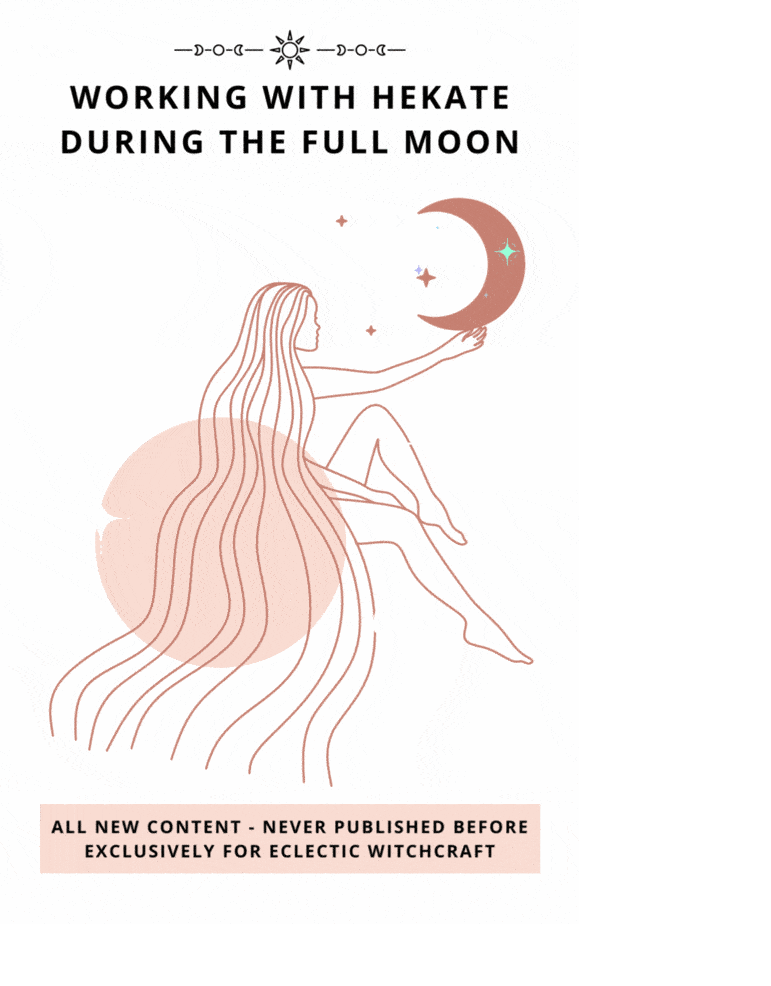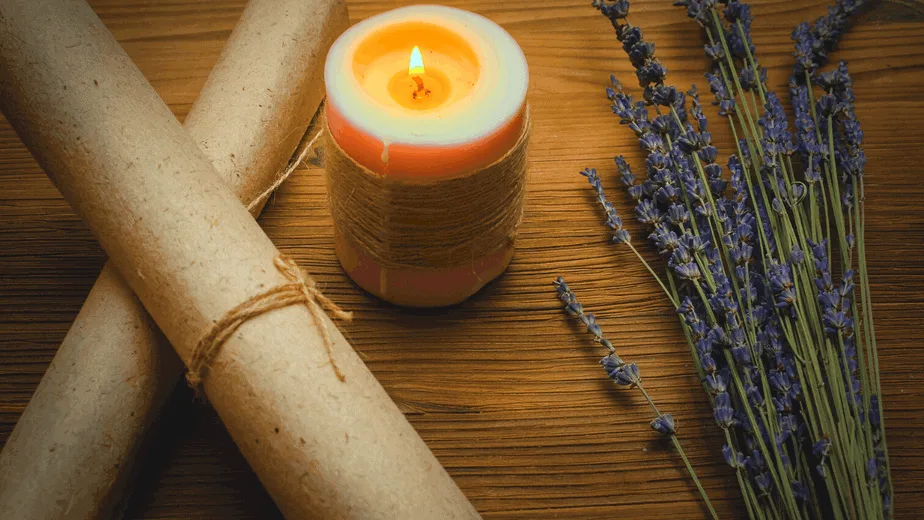Please note that posts on this site may contain affiliate links
The story of the goddess Ostara, or Eostre, begins with a medieval monk named Bede. She isn’t documented in any pagan sources and is only known through oral traditions and linguistic theories.
To modern pagans, the goddess Ostara is a goddess of the dawn, spring, and fertility. Her legends involve typical Easter symbols like rabbits, eggs, fairies, and flowers.
While Ostara’s known myths are not ancient, they are older than you might think. They also tie into common themes around the Vernal Equinox.
Because we know so little about the goddess, how pagans worship her varies wildly among different traditions. In fact, many pagans simply do not worship her at all, choosing to honor a different deity during the spring holidays.
I wanted to know more about this enigmatic goddess and how she might fit into paganism. I hope that this article will be fascinating and educational.
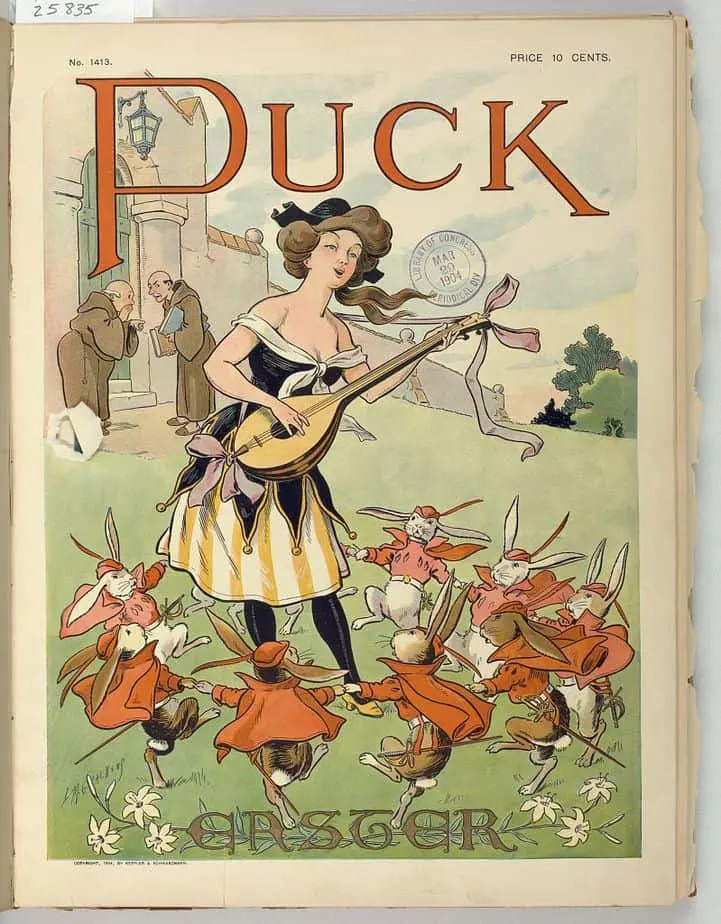
Eostre Goddess Facts
The monk Bede mentioned the goddess Eostre as a month that comes after Hrēþ-mōnaþ. She was the goddess that ruled over that month of early spring.
If the early pagans did worship her, she was a goddess of the dawn, upspringing light, and a goddess that brought many blessings and reasons to be joyful.
Her worship may have included offerings of colored eggs hung from trees during the Vernal Equinox.
She is the goddess of the earliest warm spring winds. Birdsong follows her as she walks upon the earth. The flowers pop up from the snow to welcome her to their lands.
Jacob Grimm called her the goddess of the growing light of spring. Holy water was gathered as she thawed the land, from dew on the grass or water collected from brooks.
Grimm described her as having many keys on her belt, implying that she was a liminal goddess like Hekate. She may have been a goddess of portals and doorways.
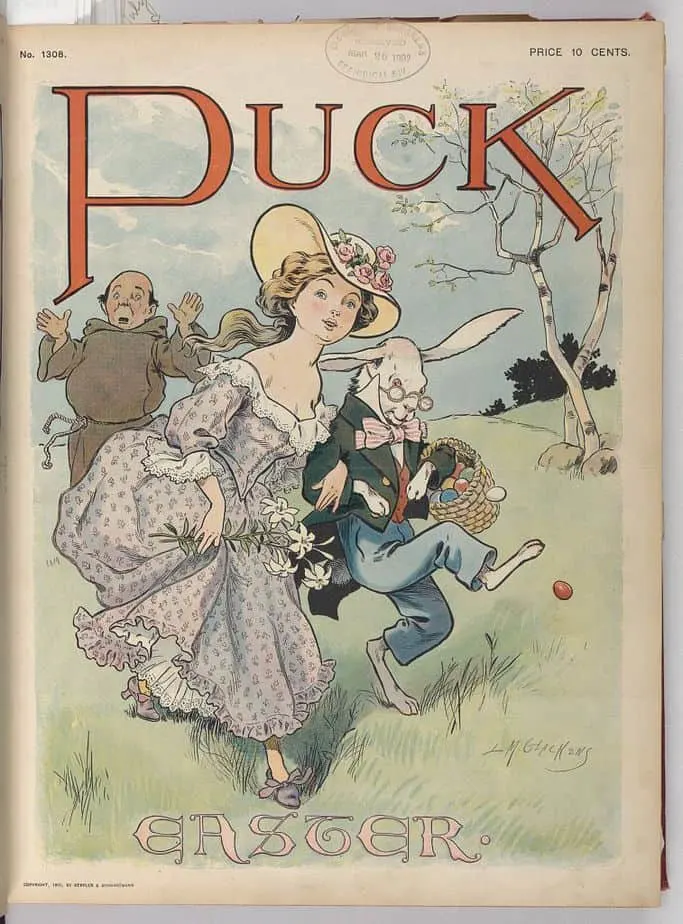
Was Ostara A Real, Historical Goddess? And Does That Matter?
Before I go into this, I want to express that I am a neopagan. I have a modern practice, and I don’t have an issue with worshipping modern gods.
In many myths, we see that deities are capable of having children. In my mind, that is explanation enough for new gods being “discovered” through personal or group gnosis.
And so, in my opinion, it doesn’t matter at all if Eostre or Ostara was ever a real goddess before Bede wrote about her or Grimm spread her through Germany.
But since this is an intriguing topic, and because I hate when ignorant people claim that Christians stole Easter from pagans, I would like to consider this question.
Did Ostara exist before the Venerable Bede wrote of her? The Anglo-Saxons did tend to name months after deities. Rhedmonath was named after Rheda, after all.
Jacob Grimm was a folklorist as well as an early linguist. His work is still influential for linguists, so his opinion should be fairly measured against modern scholars.
To Jacob Grimm, it seemed apparent that Ostara was a real goddess and that Bede had accurately expressed that she had a cult and holiday in the spring.
If Ostara was a real goddess of the ancient pagans, she would have been one of many dawn goddesses associated with the morning light and fertility.

Her name certainly does seem to fit linguistically with other dawn goddesses of Indo-European peoples.
Whether you believe she is an ancient deity or not rests solely on how much stock you put into the linguistic reconstruction of Indo-European and Proto-Indo-European languages.
This version of her is characterized as a reluctant light-bringer but also as the daughter of heaven.
Also important to consider is that Bede was not a fan of the heathens he was charged with. He detested paganism, as most Christians back then did.
For someone that hated pagan religions, it seems unlikely he would invent a spring festival and a goddess along with it. Why would he want to propagate their evil beliefs in such a way?
He would have been more likely to hide and downplay these things. That attitude could very well be why there is so little information about Ostara as a goddess, in fact.
There is one final thing to consider. The Matronae Austriahenae of Germany was a complex of goddesses with connections to the dawn and the east.
Although no Germanic god-name cognate with Hreda has been found, it has been noted that the form of Eostre the dea ‘goddess’ resembles that of the Matronae Austriahenae, the subject of dedications in all but one of some 150 Roman altar stones of the late second century AD, which were unearthed in Morken-Harff about 18 miles north of Cologne. Possibly this Rhineland name translates as ‘eastern mothers’, as a deification of the east equivalent to that of the cognate Latin name Aurora. At any rate, the existence of this altar name makes it harder to claim that Bede, even if it was just to emulate ‘Februus’ in Bernicia, created two new deae out of the month-names Hredmonath and Eosturmonath.
Eostre the goddess and the free-standing posts of Yeavering, Richard North
This group of goddesses did have names like Aust, Ost, and Eost.
Ostara could, therefore, be just another one of these goddesses.
You could spend a long time researching this goddess, and you likely still wouldn’t come away sure of your beliefs.
I don’t think it matters if she was worshipped by ancient pagans. As a goddess, I believe she makes sense for modern pagans.
If she makes sense to you, too, then I am sure she would welcome your offerings!
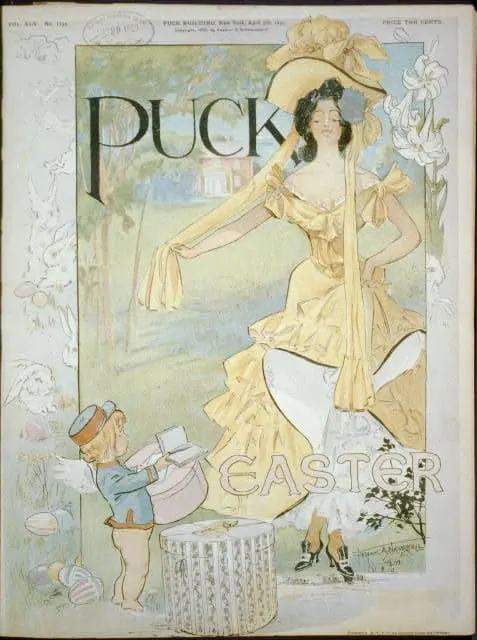
Popular Myths And Legends About Ostara
A popular myth involving the goddess Ostara is about her turning a bird into a hare.
The goddess was late one spring, but as she was hurrying across the land, she stumbled upon a little bird. The bird was shivering and dying from the cold.
Feeling remorse for her part in this, Ostara warmed up the bird. Unfortunately, the bird’s wings were frost damaged. It couldn’t fly.
To remedy the situation, the goddess Ostara turned the little bird into a rabbit but gave the rabbit the ability to lay colorful eggs once a year on her feast day.
In some stories, the bird-rabbit was the one that chose to lay the colorful eggs as thanks to Ostara.
In less happy versions of the myth, Ostara later becomes angry with the rabbit and throws him into the heavens. There, he becomes the constellation Lepus, under the foot of the constellation Orion The Hunter.
In another myth, Ostara was capable of turning into a rabbit herself. Because rabbits are nocturnal, they are connected to the moon, and thus so is the goddess of spring and fertility.
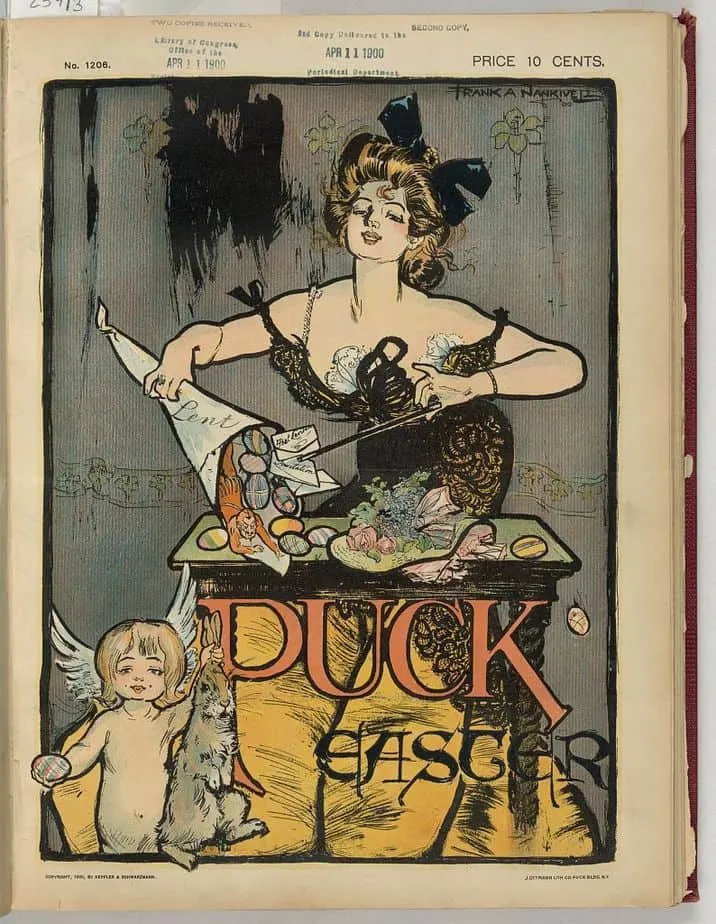
Ostara As A Goddess Of The Spring
As she became more popular among Wiccans and neopagans, Ostara took on many qualities of an early spring goddess.
First and foremost, a dawn goddess is both an aspect of the day’s dawning and the dawning of the year. As the sun warms, her presence grows stronger across the lands.
She was said to bring fertility, rebirth, and spring renewal to the land.
The goddess Ostara warmed the cold winter winds and helped the plants to spring up from the ground. It was her warmth that melted the snow.
With the help of The Horned God, she managed nature and encouraged the plants to grow.
According to Jacob Grimm, she came in on Easter morning with keys and went to brooks to collect water. Water drawn on Easter morning healed and was holy to her.
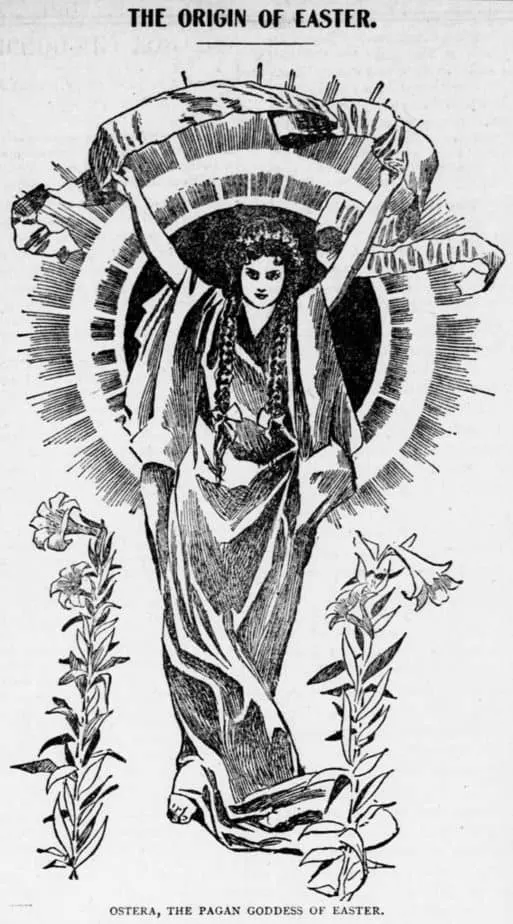
Ostara As A Fertility Goddess
Generally, the goddess Ostara is depicted as a maiden goddess. This makes her mature enough to bear children but not yet having any of her own.
She is also is depicted with flowers and new greenery. Her association with rabbits, bunnies, hares, and eggs make her association with fertility clear.
The message of Ostara is that springtime is approaching, and the earth is becoming fertile once again.
Ostara, as she has been depicted since the 1800s, is indeed a fertility goddess. As such, she is an excellent choice for any pagan looking to become pregnant or looking to become a parent by any means.
Her position as a fertility goddess also links her to manifestation. Perhaps instead of having a baby, you want to give birth to a new business or relationship this year.
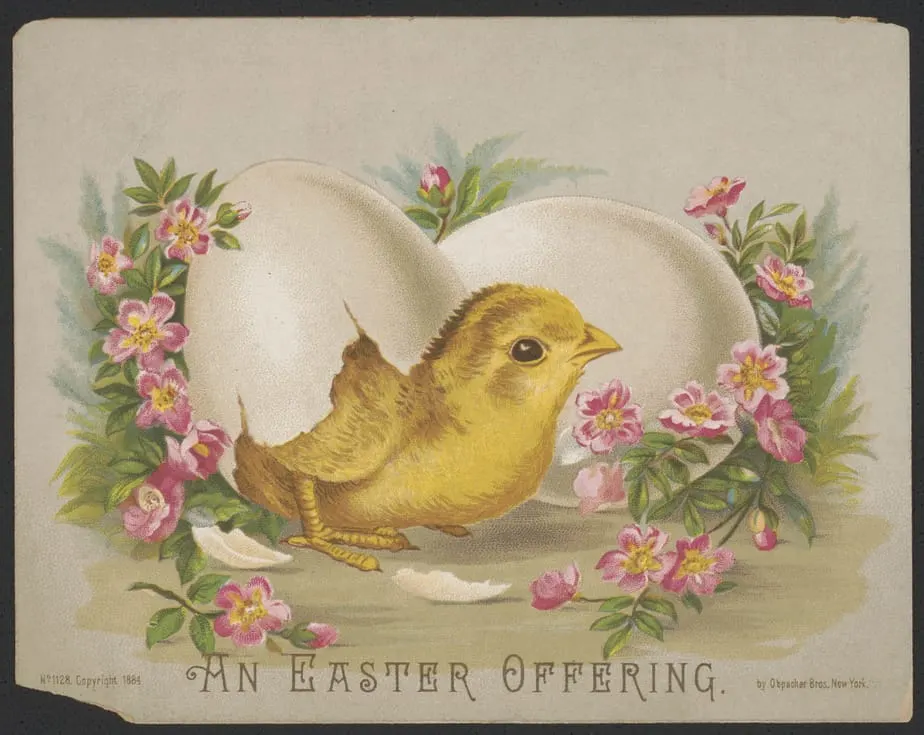
Offerings For The Goddess Ostara
Bonfires are still lit at dawn on the Spring Equinox for Ostara.
Because Ostara is a goddess of fertility, she is also associated with grain, bread, and cakes.
These are just a few excellent offerings for Ostara. Fresh cut flowers, eggs, paintings of rabbits, and white, yellow, or green candles are perfect options, too.
On the day of the Vernal Equinox, greet the morning by lighting a candle and watching the sunrise. Spend quiet time in nature.
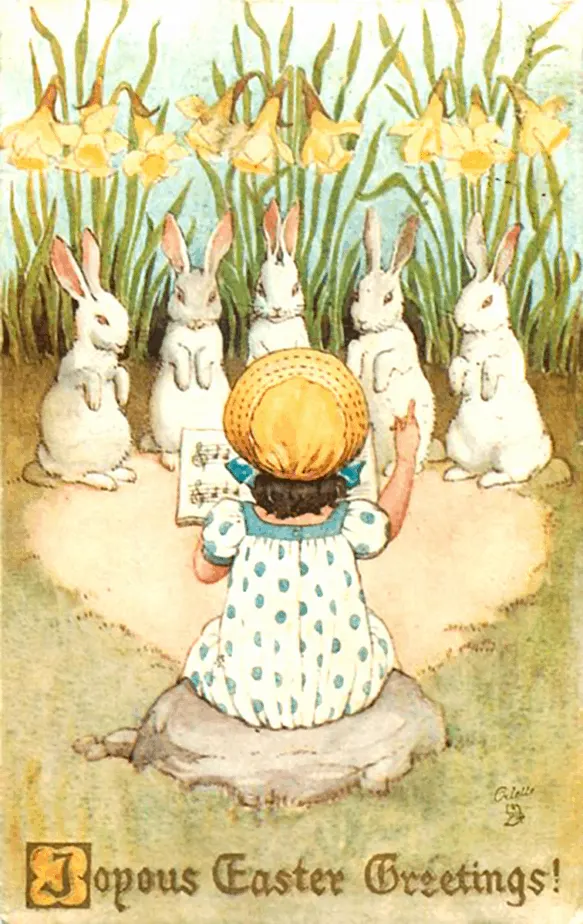
What Are The Magical Correspondences Of Goddess Ostara?
Symbols of spring, fertility, and growth are prevalent during this time. Any symbols typical of Easter are popular as well.
Use these symbols on altars, coven celebrations, spells, and rituals to create a connection between you and the goddess Ostara.
| Themes | Ostara Correspondences |
| Animals | Butterflies, baby chickens, lambs, rabbits, bunnies, robins, snakes |
| Colors | Green, light green, pastel colors, white, yellow, pink |
| Crystals | Moonstone, amethyst, rose quartz, diamond |
| Foods | Grain, bread, cakes, eggs, candy, cheese, cream, chocolate, dandelion greens, edible flowers, salads, sprouts |
| Herbs and Plants | Ash, alder, birch, daffodil, dandelion, dogwood, clover, peony, primrose, tulips, snowdrop |
| Incense | Rosewood, geranium, myrrh, violet, patchouli, jasmine, rose, vervain |
| Spells | Fertility, growth, balance, idea generation, creativity, candle spells, marriage, sexuality, new beginnings |
FAQs
Who is Eostre and what is her significance as a goddess of spring?
Eostre is a goddess of spring, fertility, and dawn. While she is not documented in any pagan sources, the medieval monk Bede mentioned her as a goddess who ruled over the month of early spring. Her legends involve typical Easter symbols like rabbits, eggs, fairies, and flowers. She is considered a liminal goddess, and may have been a goddess of portals and doorways.
What is the connection between Eostre and Easter?
The name “Easter” is derived from Eostre, and the symbols associated with her, such as rabbits, eggs, and flowers, were later incorporated into Christian celebrations of Easter.
Why is Eostre associated with rabbits?
Eostre is associated with rabbits because they are symbols of fertility and rebirth, which are themes associated with spring and the Vernal Equinox.
How do modern pagans worship Eostre?
Modern pagan worship of Eostre varies widely among different traditions, and many pagans choose to honor a different deity during the spring holidays. However, some pagans choose to honor Eostre as a goddess of spring and fertility with offerings of colored eggs, fresh cut flowers, and candles. Bonfires are also lit at dawn on the Spring Equinox to honor her.
During the full moon, we call upon Hekate to assist us in clearing our past, releasing our fears, and opening ourselves to new possibilities. We ask her to help us gain clarity in our lives, to help us transform our inner worlds, and to allow us to move forward with courage and confidence.
It is said that Hekate helps us to overcome obstacles and challenges that stand in our way, and to achieve our goals. In addition to being a benevolent Goddess, she is also a fierce warrior. When we summon her, we invite her to help us take charge of our lives, to lead us into battle, and to fight for justice.
I am an eclectic witch - I've been practicing since 1974. As a student of the occult, working with astrology, tarot cards, runes, and numerology, I found that this was a very comprehensive and well written text on working with Hekate during the full moon. Highly recommended. - Gail Sager
Great read - a must have for anyone interested in working with the Goddess during the full moon! Highly recommended! - Luis Meyer

